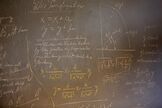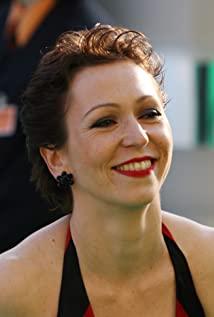After reading it all night, I paused in many places, sighed, paced, lay on the bed with my head up and looked at the ceiling and pondered quietly. There are so many things that I can’t describe. Here are just a few new things that I have learned as a physics student in the history of physics:
1. One of the founders of statistical physics. At the time of Einstein's miracle year, molecular theory was still a very novel thing, completely out of the scholastic's sight (it can be fully reflected from the curriculum setting at the university level and the Boltzmann suicide incident). This also reflects the extraordinary significance of his interpretation of Brownian motion. When studying statistical physics, everyone will learn what Ai Gong did to Brownian motion, and thus can feel the significance of his introduction of equilibrium statistics to the level of non-equilibrium fluctuations. But after understanding the academic background at that time, you can know that Einstein is not only a "master" of statistical physics, but can be said to be one of the "founders" of statistical physics (the first person we think of in statistical physics is usually Both are Boltzmanns, and Einstein is often ignored. This is because the content taught in college is mainly equilibrium statistics, and people only pay attention to a few of Einstein's contributions in the field of equilibrium statistics, such as solid heat capacity. Einstein's formula and Bose-Einstein distribution/condensation, although these are enough to make him shine)
2. The "evolution" of physics. Einstein came into contact with many new ideas at the university level, including Mach's thought (Einstein even named the second principle of general relativity "Mach's principle", which shows the deep influence of Mach on it). Whether at home or abroad, the Mach principle is discussed in good mechanics textbooks, which can be regarded as the beginning of love. Einstein learned about Maxwell's electromagnetic theory and macroscopic thermal conductivity theory before college, and he learned about Mach's philosophical thought and molecular kinetic theory under the interaction with Mileva when he was in college. These theories were all new at the time, reflecting the characteristics of young Einstein keeping up with the frontier, which is worth learning by our contemporary physicists (although this is already a commonplace in the industry).
In addition, when people talk about the history of physics at the end of the 19th century, they refer to the "two dark clouds" again and again, thereby introducing the theory of relativity and quantum mechanics. Aside from the inaccuracy brought about by the popular science, the gap between the current physics and the two Jiazi before is more than "two dark clouds"! The major courses of physical theory at the university level are, in the final analysis, the four major mechanics and solid state physics. Among these five, at the end of the 19th century, classical mechanics is relatively complete, but it is still in the direction of chaos and dynamic systems. Except for Poincaré, who has just started, it is still basically blank. There are many key issues in fluid mechanics. It's not clear either; no one in electrodynamics has noticed the Lorentz covariance of Maxwell's equations, so it is inherently contradictory to the Galilean covariance of Newtonian spacetime (and not eliminated by the low-velocity approximation) ; Statistical mechanics has just started, and there is no concept of what constitutes the smallest unit of statistics, let alone others; the other two have not yet been born, it goes without saying... As for general relativity, quantum field theory, etc., it is simply a fantasy ! In the application of mathematics, at that time, let alone the tools of tensor and group theory, even the matrix theory in the line generation was rarely used, let alone topology, number theory, etc.! When people think of the earth-shaking changes of our human beings in the 20th century, they think of two world wars and the Cold War, and they think of airplanes, nuclear weapons, computers and the Internet. Never would they have thought that basic science has changed to such an extent!
3. The master of new quantum theory. People often say that Einstein is one of the founders of the old quantum theory, because he explained the photoelectric effect, which combined with the de Broglie relationship, forms the quantum mechanics of the particle nature of light + the wave nature of particles (After the emergence of newer theories such as quantum electrodynamics, the expression of "wave-particle duality" has actually become a historical expression. Using this logic line I mentioned to describe quantum mechanics, it is not necessary to so-called The "wave-particle duality". Both light and physical particles are particles, and particles have wave properties and satisfy the Schrödinger equation under low-energy conditions). But in the new quantum theory, how can we ignore the EPS paradox created by him? This debate between him and Bohr through ideal experiments is undoubtedly the forerunner to inspire Bell's inequality. From this point of view, Einstein's contribution to the new quantum theory may be inferior to Pauli, Dirac, Schrödinger, Heisenberg and others, but it is still the first line.
4. Use simple models to capture key contradictions. When Einstein solved the problem of Brownian motion, inspired by his friend Besso, he got rid of the lengthy calculation and directly attacked the one-dimensional situation, which is really insightful! As a result, physicists like to build "toy models", considering three-dimensional and even high-dimensional problems from one dimension. For example, when introducing the phonon model, first consider the one-dimensional spring oscillator chain to obtain normal modes; then consider oscillators of different masses to obtain acoustic waves and optical waves; finally, it is a matter of course to extend one-dimensional to three-dimensional. Just put the "oscillator" in the original cell (or the Brillouin zone in the inverted space). Conversely, if you study the three-dimensional situation directly, you will have a lot of confusion and will not be able to start. But sometimes, it is not so easy to generalize from one dimension to three dimensions. For example, in the Ising model in magnetism, the one-dimensional case was solved by the proposer, and an analytical solution was finally found in the two-dimensional case, but no analytical solution has been found for the three-dimensional case, which is a frontier topic of current research. In addition, the example of Brownian motion is actually the embodiment of the idea of spherical coordinates, which is also applied in many other places. For example, when calculating the wave function of electrons outside the hydrogen nucleus, it will be divided into radial and angular directions to calculate separately. Considering the radial problem is actually a manifestation of the one-dimensionalization of the three-dimensional problem. More generally, the effective potential is considered in the conscious force field for this purpose.
5. A footnote to the special theory of relativity. When watching the show, I also did thought experiments with Einstein, and I deeply felt that the thinking of chasing light is indeed interesting, even after the special theory of relativity. For a beam of light, its γ is ∞, that is, its intrinsic time can only be 0, which corresponds to the finite time in our frame of reference. Then, for us "sitting on a beam of light", time is "frozen". That is to say, a beam of light emitted from the sun, for this beam of light, it actually goes to the orbits of Mercury, Venus, and Earth at the "same time"? Of course, this idea is wrong, because the clock slowness formula can only be used in the same place. For the presence of spatial separation, the relativistic invariant of relativistic distance must be used. However, when I just got the "wrong conclusion", I was still shocked and shuddered.
View more about Genius reviews











